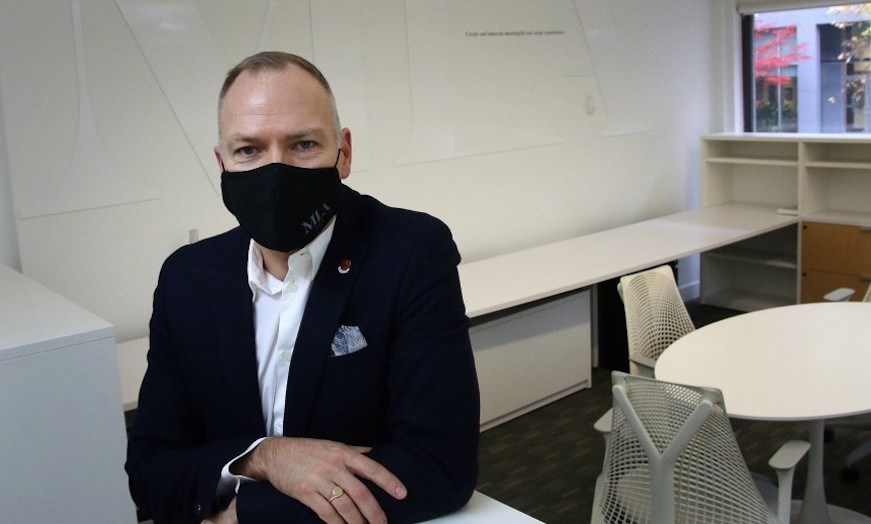The pandemic is forcing many Vancouver employers to face hard questions on whether they should be bringing workers back to the office, and if so, how fast and when – particularly given recent steady rises in the number of new COVID-19 infections and active cases.
Most companies shifted quickly to enable staff to work from home in March, as the COVID-19 pandemic emerged. Some then started allowing employees back to the office in late summer, after Labour Day.
Provincial health officer Bonnie Henry, on November 7, started urging office employers to shift back to a remote workforce.
On November 23, Henry made clear that business meetings are still allowed to take place but the meetings should be virtual if at all possible.
Downtown Vancouver office towers have long been mostly empty, confirmed Tom Knoepfel, senior vice-president and Western Canada portfolio manager at one of the city’s largest landlords, Cadillac Fairview.
“We are at about 30 per cent occupancy across our office portfolio,” he told Business in Vancouver (BIV) in early November, about his company’s 3.4 million square feet of space, spread across 12 office buildings.
Most Cadillac Fairview tenants are not rushing to have employees return to the office, he said.
The spillover effect from this phenomenon could be lower lease rates for commercial space. Office employers, meanwhile, are focused more on their own operations than on how their decisions will affect the real estate sector.
Cameron McNeill, executive director and partner at the real estate marketing company MLA Canada, told BIV that in October and early November he had been “encouraging people to be in the office two days a week so they can maintain a level of connectivity to their peers, and to their teams.”
It was never a mandatory ask, he said, but rather an encouragement. Still, after Henry’s November 7 instruction, he started to encourage employees to work from home as much as they can.
Those who come into the office must take a daily questionnaire to vouch for their health – a safeguard that Henry has suggested employers follow.
Social distancing, new Plexiglas shields at reception, hand sanitizer available throughout the office and a maximum of about 40 per cent occupancy at the office are some of the other components of McNeill’s COVID-19 safety plan. No third parties are to visit the office for meetings, he added.
The accounting and business-advisory firm Manning Elliott is an example of an employer that has had employees voluntarily come back in larger numbers.
The company had a low of about 5 per cent of its approximately 100 staff coming into the office in May, partner William Tam told BIV.
“Now, we’re at about 70 per cent to 80 per cent in the office,” Tam said on November 6.
“I wouldn’t say that there was a push for it, but it was more of an option for people to return to the office just because the home office wasn’t exactly ideal for some individuals.”
After Henry started more strongly telling people to restrict social interactions, Tam said there may have been more Manning Elliott employees opting to work from home.
“There is no set policy that you must come to the office,” he said November 18. “You just contact human resources to work with them [about how to work from home.]”
Any firms that push too hard to have employees come back to the office may face challenges in retaining workers, suggested Smith Legal Search managing partner Warren Smith.
He estimated that while most law firm offices are about 15 per cent to 20 per cent full, there were some, at least in early November, that were 40 per cent to 50 per cent occupied.
“I’m interested to see how firms navigate this question around space utilization, because obviously, as their leases come up, there becomes the question of, do we need all this space?” Smith said. “I’ve heard rumblings at a couple of firms that are looking at dramatically shrinking their [real estate] footprint.”



